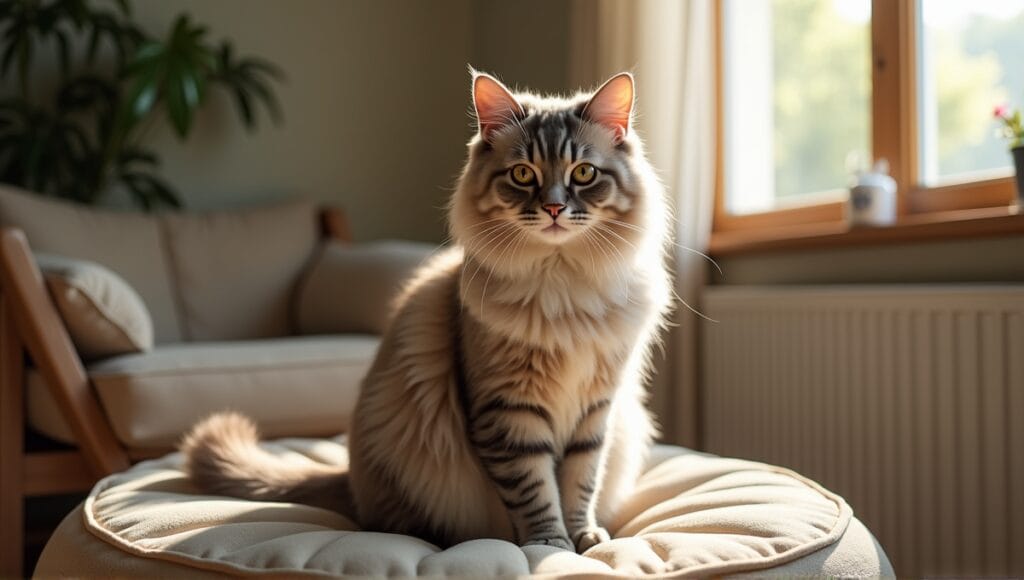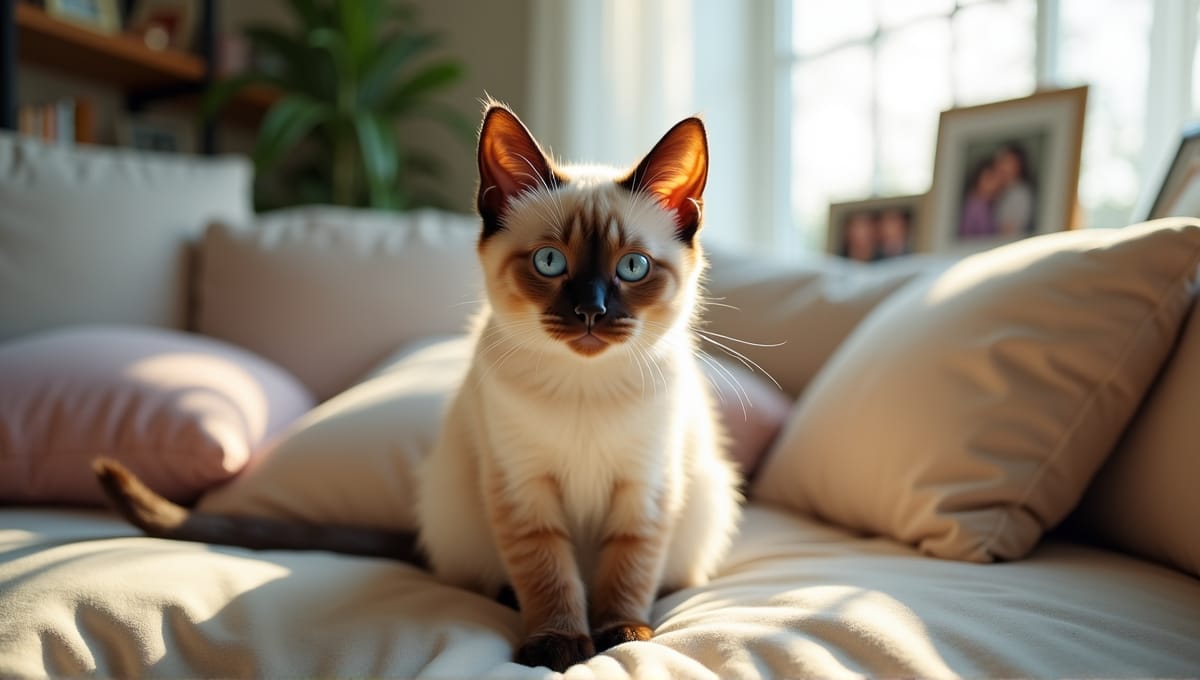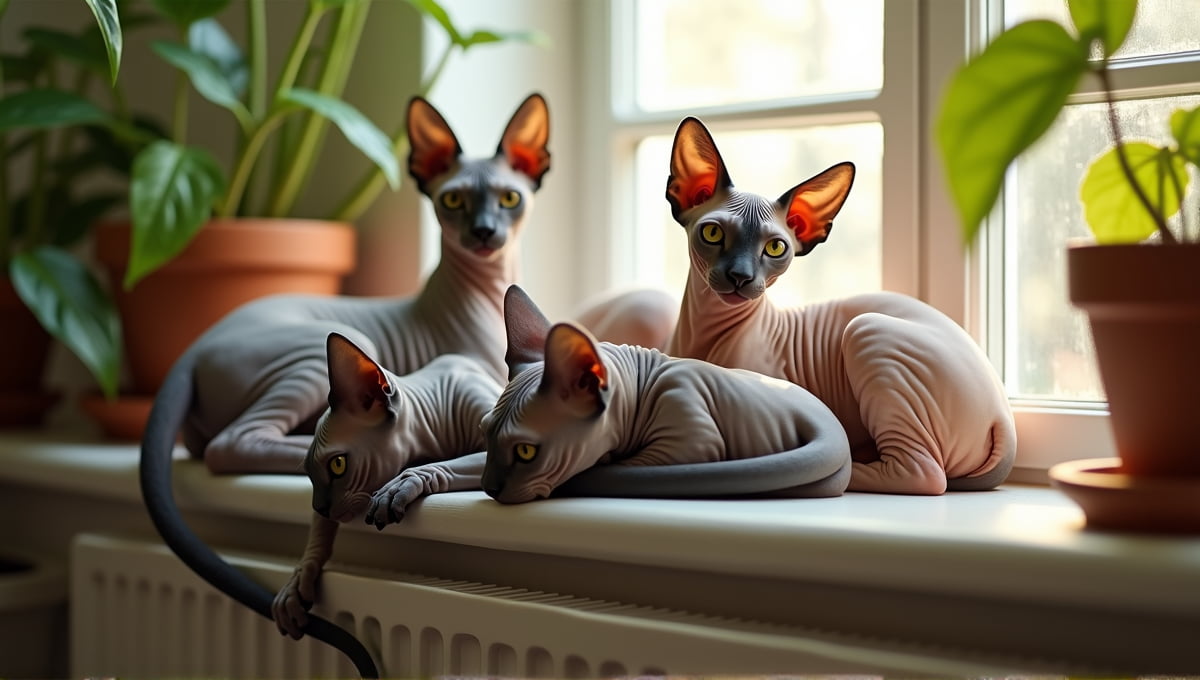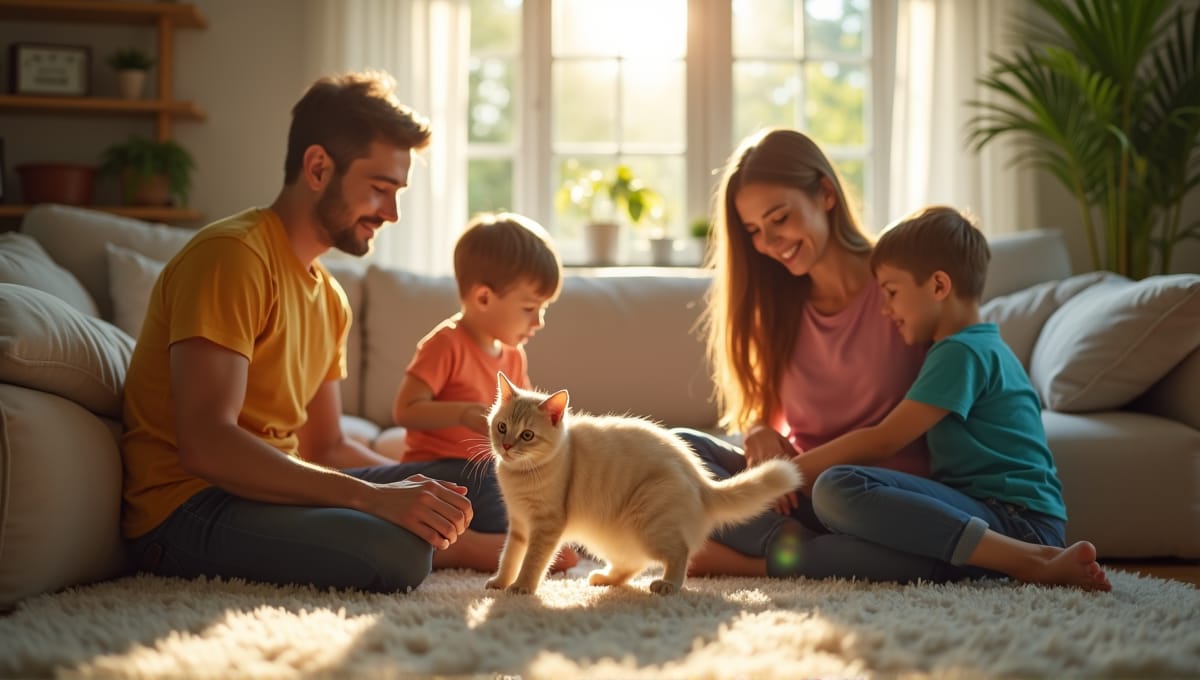Purebred cats have specific characteristics and behaviors, though they aren’t the best option for everyone. I’ve been studying cats for several years, and I’ve learned a lot about the benefits and challenges of purebred cats. You’re about to find out if a purebred cat is suitable for your home and lifestyle. We’ll discuss the most common breeds, health issues, and expenses so you can make a well-informed decision.
What Are Purebred Cats?
Purebred cats have a documented lineage. They’re bred with a specific set of traits in mind that they pass down through generations. Unlike mixed breed cats, purebreds have same-breed parents, which makes their characteristics more predictable.
Breed standards are key. The breed standard outlines the ideal appearance and temperament for each breed. Registries, like the Cat Fanciers’ Association (CFA), oversee and maintain these standards. They also keep track of purebred cat pedigrees.
The history of cat breeding is quite interesting. In the 19th century, cat enthusiasts, much like yourself, began selectively breeding cats to achieve a specific look or behavior. The first cat show took place in 1871 at the Crystal Palace in London. This event really brought about the idea of developing distinct breeds of cats.
Today, there are over 70 recognized cat breeds throughout the world. Each breed has something unique about it that makes it different from the rest. When you choose a purebred cat, you’re choosing a pet with a proud history and a specific set of traits.
Popular Purebred Cat Breeds
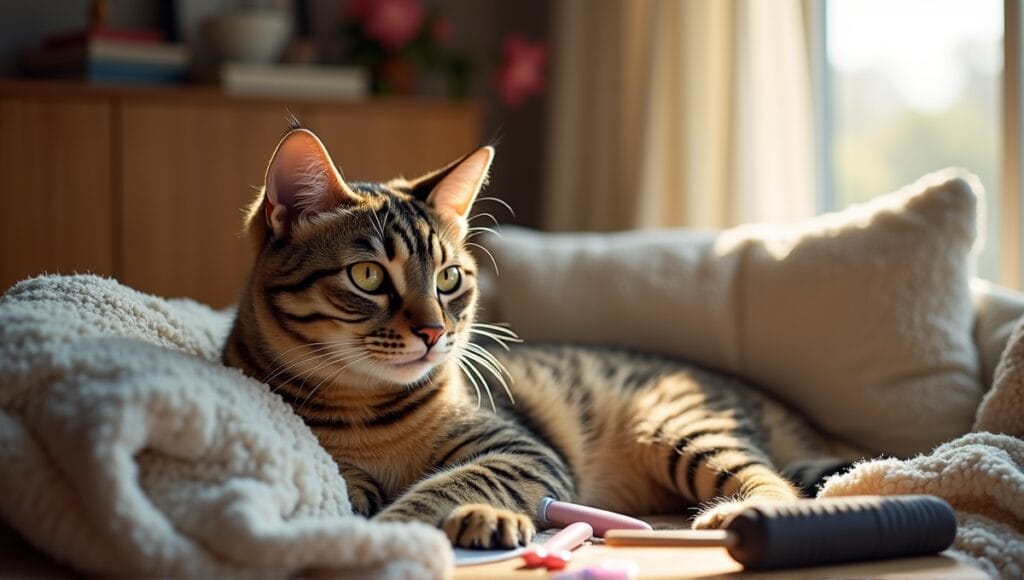
Purebred cats come in all shapes, sizes, and personalities. Here are ten of the most popular breeds:
- Persian: Known for their flat faces and long, beautiful coats.
- Maine Coon: These are large cats that are gentle and have tufted ears and bushy tails.
- Siamese: These are intelligent, vocal cats with bright blue eyes.
- British Shorthair: These are chunky, round-faced cats with plush coats.
- Scottish Fold: These cats have folded ears and an owl-like appearance.
- Sphynx: This is a hairless breed with wrinkled skin and large ears.
- Bengal cat: These cats look like a mini leopard with spots.
- Ragdoll: These are big, gentle cats that go limp when you pick them up.
- Russian Blue: These are beautiful cats with silvery-blue coats and green eyes.
- Abyssinian: These are active, playful cats with ticked coats.
Each breed has its own appeal. For example, the Persian has been a favorite for generations. According to CFA statistics, it has been one of the top three most popular cat breeds in the U.S. for over 30 years. They are very sweet and have a regal look that appeals to many people.
When selecting a purebred cat, think about what you’re looking for. Do you want a vocal cat? A playful cat? A lap cat that will sit quietly with you? There is a breed that fits every lifestyle.
Genetics and Breeding of Purebred Cats
Cat genetics is a complicated science, and breeders use their knowledge to preserve and enhance breed traits by selecting cats with the desired traits and breeding them to other cats with those same traits.
Breeders have used selective breeding to shape the various cat breeds we see today. Unfortunately, selective breeding can also result in health problems, as some purebred cats are prone to genetic issues as a result of a limited gene pool.
It’s important to realize that a cat’s genetics don’t exclusively determine the cat’s traits. Research indicates that genetics and breeding influence about 50% of a cat’s traits, while the other 50% of a cat’s traits come from environmental and social factors. Therefore, how you raise and treat your cat will strongly influence its personality.
Proper breeding practices are essential. A responsible breeder prioritizes the health of the cat over everything else and only breeds cats that are free from health issues by doing genetic testing.
Therefore, understanding these concepts is important as they will impact your cat’s health and behavior over the course of its life.
Characteristics of Purebred Cats
Purebred cats have a wide range of physical characteristics. You’ll find everything from the Persian with its long, luxurious coat to the Sphynx with no coat at all. Coat colors and patterns also vary from solid colors to tabby patterns and even points in breeds like the Siamese.
Each breed also has a unique body shape. You have the large, heavy Maine Coon, the sleek and slender Siamese, the short-legged Munchkin, and the tall and lean Savannah.
Temperaments range just as widely. Some breeds like the Abyssinian are very active and playful, while others like the Ragdoll are known for being very calm and cuddly.
Different breeds also have unique vocal patterns. For example, the Siamese cat is famous for its distinct, loud meow and is known to have more than 100 unique vocalizations. Therefore, if you enjoy having conversations with your cat, you might prefer a specific breed known for being more chatty.
Life expectancy can also vary significantly from breed to breed. For example, the Siamese breed often lives to be 15-20 years old, making it one of the longest living popular breeds. However, keep in mind that the specific diet, exercise, and healthcare your cat receives will also impact its longevity.
All of these factors are important to consider when selecting a specific breed of cat, as it will impact your day-to-day life with your new cat.
Purebred Cat Health Considerations
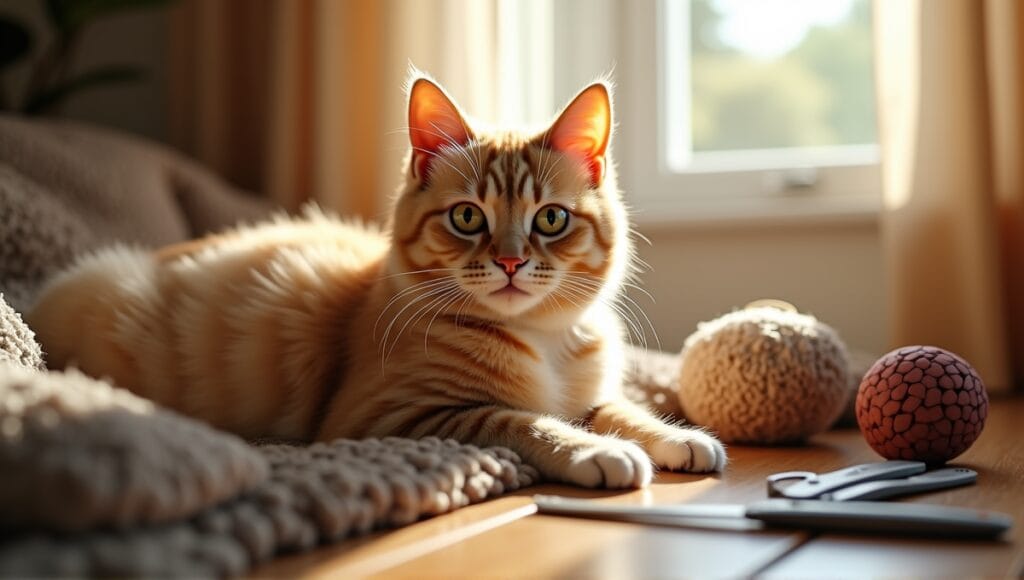
Each cat breed has its own unique set of potential health problems. For example, Persians often have respiratory issues because of their flat shape of their face. Maine Coons are at risk of heart problems. Siamese cats are more likely to have one specific type of cancer.
Genetic testing is critical in purebred cat breeding to identify carriers of hereditary diseases. Responsible breeders invest in these tests and use the results to reduce the risk of hereditary diseases creeping up in kittens.
All cats need regular preventative care, but this is especially important for purebred cats. Regular checkups at the vet can catch breed-specific problems early. Some breeds may require a specific diet or exercise to stay healthy.
As an owner, you should already know the specific health problems associated with your breed. This will allow you to provide the best care for your cat depending on his or her breed. It will also help you prepare for potential veterinary expenses.
After all, a healthy cat is a happy cat. By understanding these health issues, you’re already setting yourself up to be a better purebred cat owner.
Acquiring a Purebred Cat
Choosing a reputable breeder is important when buying a purebred cat. Look for breeders registered with reputable cat associations. They should be transparent about their breeding operation and the health of their cats.
When you communicate with a breeder, ask plenty of questions. Ask about health certifications, genetic testing, and how they socialize the cats. A good breeder will gladly answer your questions and might also ask you some questions.
Purebred cat prices can vary greatly. Here’s a general price range for some of the most popular breeds:
| Breed | Price Range |
|---|---|
| Persian | $1,200 to $1,800 |
| Maine Coon | $1,000 to $2,000 |
| Siamese | $600 to $1,000 |
| Bengal | $1,500 to $3,000 |
| Scottish Fold | $800 to $1,500 |
These are just the average costs. Show cats or cats with rare colors will be on the higher end of the price range.
If you don’t have much to spend, consider adopting. Breed-specific rescue groups often have purebred cats available. These cats will likely be adults, but they still make fantastic pets.
Purebred Cat Registries and Shows
Major cat registries are an important part of the purebred cat world. The Cat Fanciers’ Association (CFA) and The International Cat Association (TICA) are two of the largest registries. These organizations establish breed standards, maintain pedigree records, and sanction cat shows.
Registering a purebred cat requires documentation of its pedigree. This step ensures each breed maintains its integrity and enables cats to participate in shows and breeding programs.
Cat shows are fun for any cat lover. Judges evaluate cats based on how well they adhere to the breed standard. They assess body shape, coat texture, and of course, temperament.
But cat shows serve a larger purpose than earning a ribbon. They allow breeders to show off their cats and educate enthusiasts about their breed.
Understanding registries and cat shows offers a glimpse into the world of purebred cats. Doing so is part of understanding the rich history and ongoing work to preserve purebred cats.
For those with allergies, there are hypoallergenic cats available among purebred breeds. These cats produce fewer allergens, making them a great option for allergy sufferers who still want to enjoy feline companionship.
Final Takeaways
Purebred cats are interesting animals with their own special characteristics and care requirements. From the Maine Coons, which are gentle giants, to the Siamese, which is quite vocal, each breed has something unique to offer. However, selecting a purebred cat is a significant commitment.
You need to know about their genetics, typical behaviors and how to best care for them. You also need to evaluate grooming requirements, energy levels and any potential health problems. Whether you want a show cat or just a wonderful pet, responsible breeding and good care are essential to help your purebred cat live a happy life.


